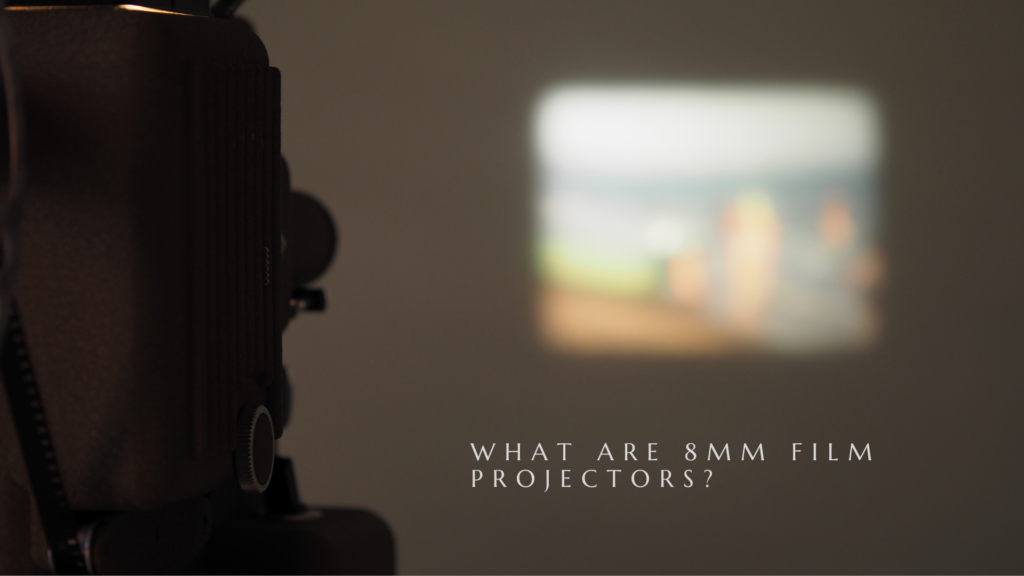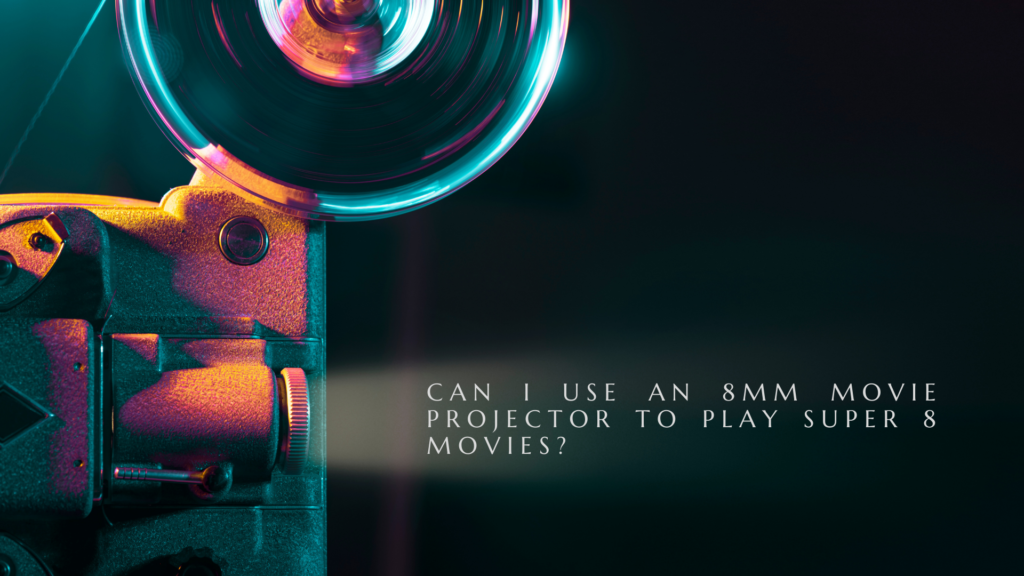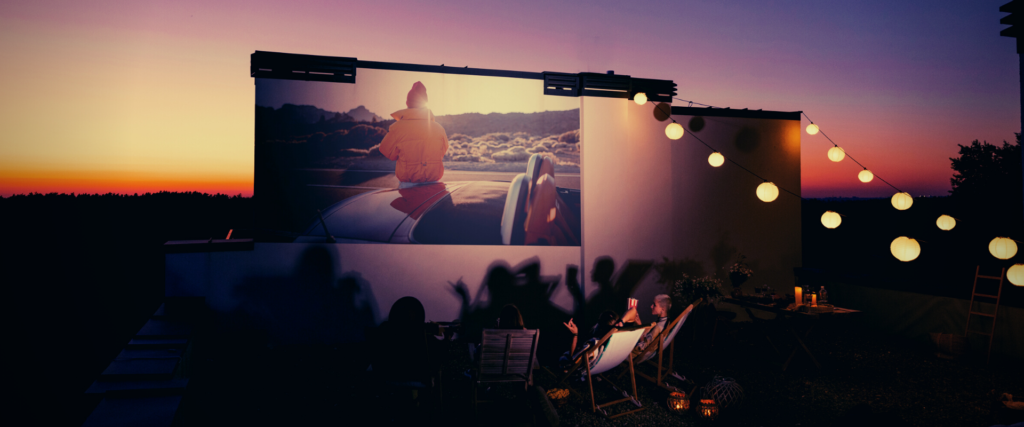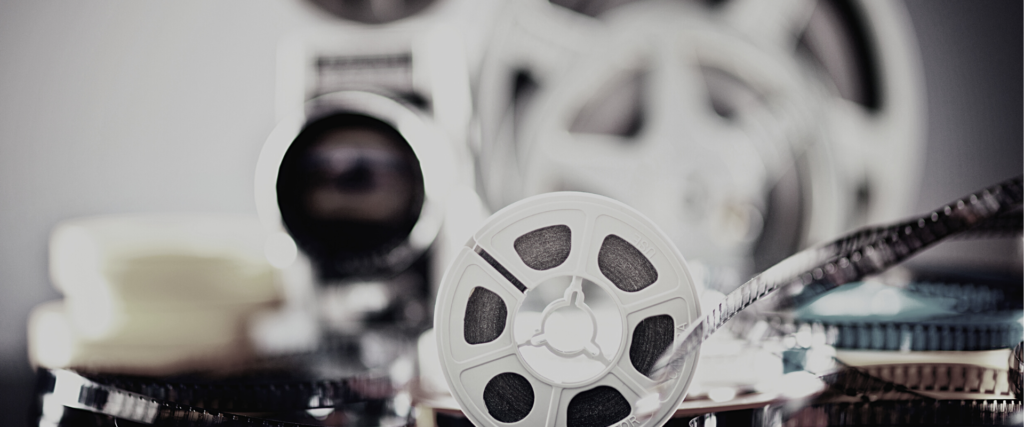How to Use an 8mm Movie Projector: A Quick and Easy Guide
Some of us still remember our parents chasing us around with a hand-held camera, capturing our memories on tape. Afterward, we would wait patiently as they spooled, tinkered, and reeled the 8mm film projector as we watched the exploits of our everyday lives in the film’s grainy glory.
Today, there is still significant interest in using 8mm film, particularly as a stylistic filming tool. In fact, it is still as loved now as it was back in the ‘60s.
In this guide, we’ll cover what an 8mm movie projector is and how you can watch your old movies and family videos on 8mm film with or without one.

What are 8mm Film Projectors?
Super 8mm film, released by the Kodak Company in 1965, was designed to be a simpler, less expensive, and higher quality option for amateur filmmakers. The film could be inserted into the camera with little effort and shipped off to develop. This new technology was ground-breaking since it was accessible to everyone, from creative types to ordinary people.
Watching Film Without an 8mm Projector
Here are the three primary ways to watch film strips without an 8mm movie projector:
1. Magnifier and Light
While this method won’t let you watch an 8mm film, it will give you a sense of its content.
The simplest process is to examine each film frame by holding the reel up to a bright window and peering at it with a magnifying glass or a professional tool like a loupe.
Be sure to safeguard the film from scratches and other damage by using appropriate viewing equipment. Cotton or powder-free nitrile gloves are recommended. If you wear gloves, the oils from your fingers won’t seep into the film and ruin it.
2. Digital Scanner
One do-it-yourself alternative is to buy a digital film scanner to view the images on the film and digitize the footage. There are several types on the market, and once you have one, insert the film into the device and digitize it following the manufacturer’s instructions.
3. Professional Digitization
Use a professional digitization service to scan your 8mm film if you prefer a hands-off approach that ensures higher quality. These services will handle your film with care and convert it to a digital format that can be viewed and shared online, making it the best way to watch your old movies without a Super 8 film projector. You can use a mail-in service like EverPresent to ensure that your treasured memories are protected from time. Simply fill out a form, send in your film, and wait for your digital video (and original film) to arrive in the mail.

Can I Use an 8mm Movie Projector to Play Super 8 Movies?
If you’ve been digging around your attic and have stumbled upon a treasure box of 8mm film, it’s easy to get excited and purchase the first Super8 player you come across.
However, before reeling up Super Eight projectors, you first need to know what type of film you’re putting through.
It’s often unclear whether a person’s home movies were shot on “regular-8mm” (also known as “standard 8mm” or “double 8mm”) or “Super 8mm” film. This matters because it’s impossible to watch a Super 8mm film on a conventional or double 8mm movie projector is impossible. Conversely, regular 8mm film is incompatible with a Super 8 movie projector. There is a high probability that you will ruin your priceless videos if you switch them around.
However, DUAL 8 millimeter projectors were produced that could play both regular-8 and Super-8 films.

How to Use an 8mm Film Projector
Using an 8mm movie projector today might seem archaic, especially if you compare it to casting a movie from your phone to a Smart TV. However, using a Super 8 projector is nostalgic and takes many people back to simpler times. Here are the typical steps to set one up:
- Connect the projector’s power cord and switch it on.
- There will be two arms on the projector for holding the film reels. Move them into position if they aren’t already there.
- Put the 8mm film reel on the front arm of the projector, which is the arm closest to the screen. Don’t load the empty film reel onto the forward arm of the machine; instead, set it on the arm that faces the back of the device.
- The film is loaded by winding it around the front of the reel and then passing it through a slot in the lens housing. You won’t have to do anything else if it’s an automatic loading machine.
- Find the projector’s original instructions if the model doesn’t load automatically. Because models differ, the film’s positioning may vary. Loading film onto an empty reel involves passing it between many wheels. As the film is being seen, the wheels will feed it onto the next available reel, capturing the remaining frames.
- Flip the switch on your projector to face the audience. Because of this, the film will now advance at a faster rate.
- You can fine-tune the image using the focus wheel on the rim of the projector’s lens.
- After you’ve finished seeing the film, you can rewind it by placing the end of it into the spool and turning the knob to the reverse projection position on the Super 8mm viewer.

Preserve Your Memories with EverPresent
Is there a box of old 8mm film that you’re excited to see and preserve? At EverPresent, we provide high-quality services for film to digital. We digitize your cherished family memories, so they last a lifetime!
Please visit this page or contact us to learn more about how it works. One of our helpful staff members is standing by to answer your questions!

